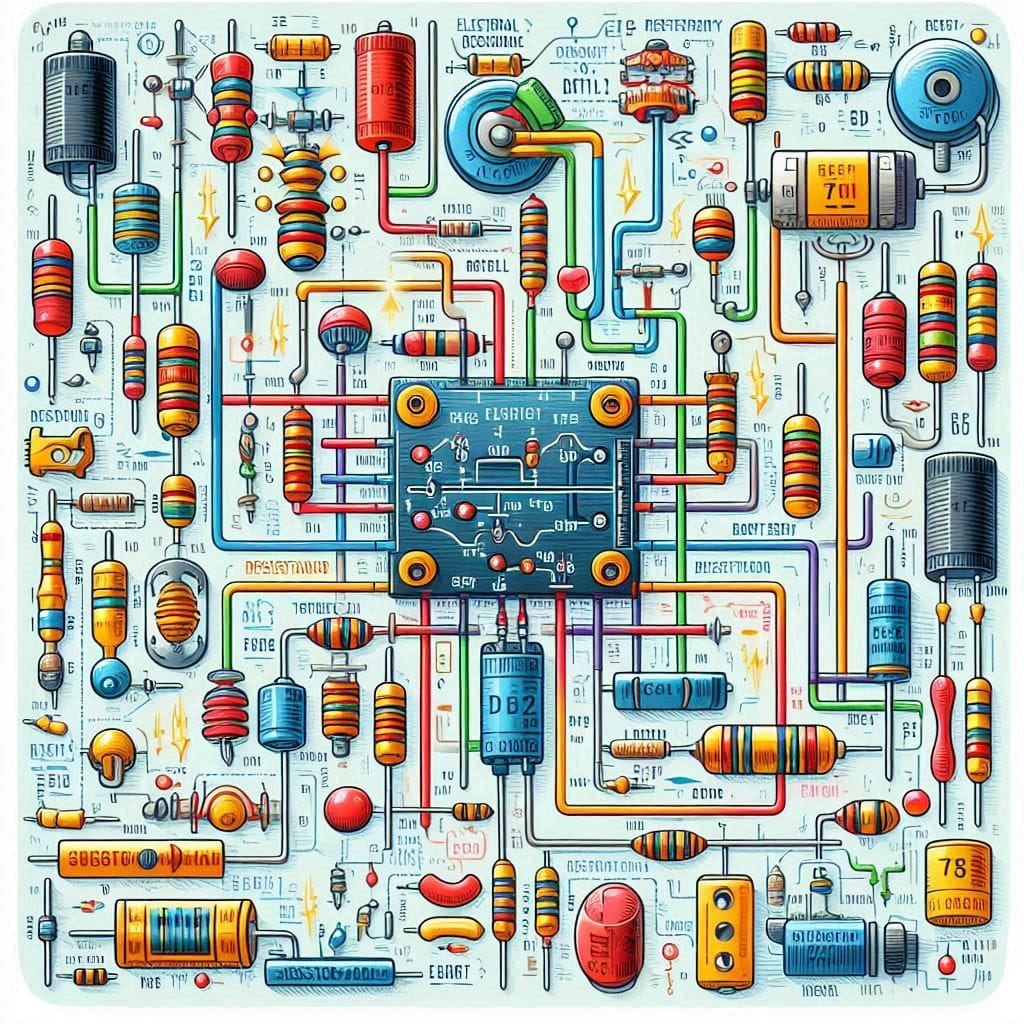
[Electrical resistance in circuits Electrical Resistance in Circuits: Understanding Its Role and Applications
Electrical resistance is a fundamental concept in electrical and electronic circuits. It plays a crucial role in controlling the flow of electric current and is essential for designing safe and efficient electrical systems. Whether you’re an electronics beginner or a professional engineer, understanding resistance can help you optimize circuit performance, troubleshoot issues, and even design innovative technologies.
In this comprehensive guide, we will explore electrical resistance in-depth, covering its definition, factors affecting it, real-world applications, and practical strategies for measuring and managing resistance in circuits.
What is Electrical Resistance? [Electrical resistance in circuits
Electrical resistance is the property of a material that opposes the flow of electric current. It determines how easily electricity can pass through a conductor. Resistance is measured in Ohms (Ω) and is governed by Ohm’s Law, which states:
V=IRV = IR
Where:
- VV = Voltage (Volts)
- II = Current (Amperes)
- RR = Resistance (Ohms)
Key Insight:
“Resistance is like friction for electricity—higher resistance means less current flow, while lower resistance allows electricity to move more freely.” – Electrical Engineering Handbook
Factors Affecting Electrical Resistance [Electrical resistance in circuits
Several factors influence the resistance of a conductor:
1. Material Composition
- Conductors (Low Resistance): Copper, silver, and gold allow electricity to flow easily.
- Insulators (High Resistance): Rubber, plastic, and glass restrict electricity.
2. Length of the Conductor
- Longer wires have higher resistance because electrons have to travel farther, leading to more collisions.
3. Cross-Sectional Area
- Thicker wires have lower resistance because they provide more pathways for electrons to move.
4. Temperature
- Higher temperatures increase resistance in most materials due to increased atomic vibrations.
5. Type of Circuit Configuration
- Resistance differs in series and parallel circuits:
- Series Circuit: Total resistance is the sum of individual resistances.
- Parallel Circuit: Total resistance decreases because multiple paths exist for current.
Types of Resistance in Circuits [Electrical resistance in circuits
1. Fixed Resistance
- Set value that does not change.
- Used in circuit boards, sensors, and power supplies.
- Example: Resistors in LED circuits.
2. Variable Resistance
- Adjustable resistance to control circuit behavior.
- Used in volume controls, dimmer switches, and tuning circuits.
- Example: Potentiometers in audio equipment.
3. Internal Resistance of Components
- Batteries and power sources have their own resistance that affects efficiency.
- Example: Battery life reduction due to internal resistance buildup.

Measuring Electrical Resistance [Electrical resistance in circuits
To measure resistance in a circuit, you can use the following methods:
| Method | Tool Used | Accuracy | Common Use Cases |
|---|---|---|---|
| Ohm’s Law Calculation | Voltmeter & Ammeter | High | Theoretical calculations |
| Multimeter | Digital Multimeter | Very High | Quick resistance checks |
| Wheatstone Bridge | Bridge Circuit | Extremely High | Precision resistance measurement |
| Kelvin Measurement | Kelvin Clips | Ultra-High | Measuring very small resistances |
Key Insight:
“Choosing the right measurement method depends on the accuracy needed and the scale of resistance being tested.” – Electronics Measurement Journal
Applications of Electrical Resistance in Circuits [Electrical resistance in circuits
Resistance is essential in various electrical and electronic applications:
1. Power Regulation
- Resistors limit current flow to prevent overheating and damage.
- Example: Resistors in power adapters to regulate voltage.
2. Sensors & Measurement
- Resistance-based sensors measure temperature, pressure, and humidity.
- Example: Thermistors in thermostats.
3. Circuit Protection
- Fuses and resistors prevent excessive current flow.
- Example: Fuse boxes in homes.
4. Signal Processing
- Used in audio, radio, and television circuits.
- Example: Resistors in equalizers to fine-tune sound frequencies.
Practical Strategies for Managing Resistance in Circuits [Electrical resistance in circuits
To optimize resistance in your electrical systems, consider the following strategies:
1. Choosing the Right Material
- Use low-resistance materials like copper for high-efficiency wiring.
2. Optimizing Wire Length & Thickness
- Shorter and thicker wires reduce unnecessary resistance.
3. Cooling & Temperature Control
- Cooling fans and heat sinks help maintain optimal resistance levels.
4. Parallel Circuit Design
- Designing circuits with parallel resistors can lower overall resistance and improve efficiency.
5. Regular Testing & Maintenance
- Periodic resistance checks prevent performance issues in electrical systems.
Conclusion: Understanding and Controlling Resistance [Electrical resistance in circuits
Electrical resistance is a critical factor in designing, troubleshooting, and optimizing circuits. By understanding how materials, length, thickness, and temperature affect resistance, you can create more efficient and reliable electrical systems.
To summarize:
- Resistance determines how easily current flows through a material.
- It is influenced by material, length, cross-section, and temperature.
- Different circuits (series vs. parallel) have unique resistance properties.
- Measuring resistance accurately ensures circuit performance and safety.
By applying these principles, you can effectively manage resistance and enhance the efficiency of electrical systems.
FAQ: Electrical Resistance in Circuits [Electrical resistance in circuits
1. What is the SI unit of resistance?
The SI unit of electrical resistance is the Ohm (Ω).

2. How does resistance affect current?
According to Ohm’s Law (V = IR), an increase in resistance decreases current flow when voltage remains constant.
3. What is the difference between resistance and resistivity?
- Resistance (R): Depends on the material, length, and cross-section.
- Resistivity (ρ): A material-specific property independent of shape.
4. Why do electrical appliances heat up?
Due to Joule heating, where electrical energy converts into heat as current passes through a resistance.
5. How do resistors affect LED brightness?
A higher resistance limits current flow, making LEDs dimmer, while lower resistance increases brightness.
Share this content:





